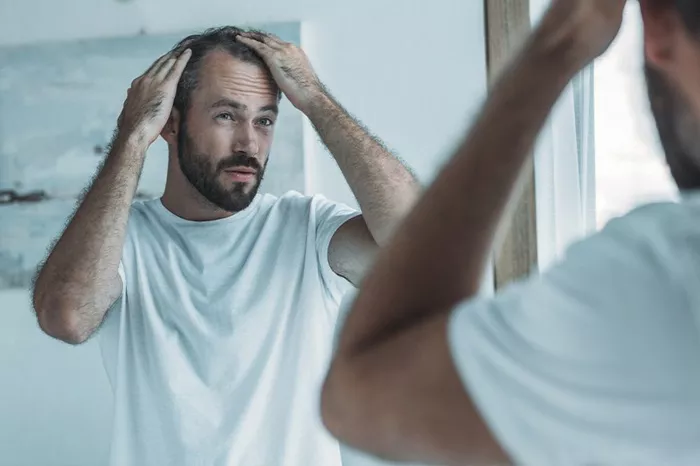Hair transplants are a significant investment in restoring natural hair growth, addressing concerns such as thinning hair or balding. Following the procedure, many individuals seek ways to enhance the appearance of their hair while waiting for transplanted follicles to grow. One popular option is the use of hair fibers, which can provide immediate cosmetic coverage and confidence. But how compatible are hair fibers with a recent hair transplant? Let’s delve into the details.
Understanding Hair Transplants
Hair transplant surgery involves the relocation of hair follicles from donor areas (usually the back or sides of the scalp) to recipient areas experiencing hair loss. The procedure typically results in new hair growth over several months, with full results visible within a year or more depending on individual healing and growth rates.
What Are Hair Fibers?
Hair fibers are cosmetic products made from keratin fibers that mimic the appearance of natural hair. They adhere electrostatically to existing hair strands, creating the illusion of thicker, fuller hair instantly. Hair fibers come in various colors to match natural hair shades and can be applied directly to the scalp.
Using Hair Fibers After Hair Transplant: Is It Safe?
Immediate Post-Transplant Phase:
In the immediate aftermath of a hair transplant, your scalp will undergo a healing process. It’s crucial to follow your surgeon’s post-operative care instructions to promote proper healing and avoid disrupting newly transplanted follicles.
Surgeons typically advise against using any products on the scalp immediately after surgery, including hair fibers. This period is critical for graft survival and ensuring the best possible outcome from your transplant.
After Healing Period (Usually 2-4 Weeks Post-Op):
Once your surgeon clears you for regular hair care products, including gentle shampoos and conditioners, you may inquire about using hair fibers.
Hair fibers can be an excellent temporary solution for concealing any lingering thinness or to enhance density while waiting for transplanted hair to grow in fully.
Compatibility with Transplanted Hair:
Hair fibers are generally considered safe to use after the initial healing phase. However, it’s essential to apply them gently and avoid excessive pulling or tugging on the scalp.
Ensure that you choose a high-quality brand of hair fibers that won’t interfere with the scalp’s natural healing process or irritate sensitive areas.
SEE ALSO: How Long Should I Spray Saline After Hair Transplant?
Tips for Using Hair Fibers After Hair Transplant
Wait for Clearance:
Always wait for your surgeon’s approval before introducing any new products to your post-transplant care routine.
Apply Gently:
Use hair fibers sparingly and gently pat them into place rather than rubbing vigorously.
Choose Quality Products:
Opt for reputable brands of hair fibers that are known for their natural appearance and non-irritating formulas.
Maintain Scalp Health:
Continue to follow a healthy scalp care regimen recommended by your surgeon to support long-term hair growth and graft survival.
Conclusion
Using hair fibers after a hair transplant can be a safe and effective way to enhance your hair’s appearance during the regrowth phase. However, it’s crucial to prioritize scalp health and follow your surgeon’s guidance regarding post-operative care. With proper application and quality products, you can enjoy the confidence boost that hair fibers provide without compromising the results of your hair transplant.
In summary, while using hair fibers after a hair transplant is generally permissible, it’s essential to exercise caution and prioritize scalp health throughout the recovery process. Always consult with your surgeon before introducing new products to your post-transplant routine to ensure the best possible outcome for your new hair growth.
This article provides a comprehensive overview of using hair fibers after a hair transplant, addressing safety considerations, application tips, and the importance of maintaining scalp health.
FAQs
Can I apply Toppik after a hair transplant?
Toppik is a popular brand of hair fibers similar to other keratin-based products. Like other hair fibers, it’s generally safe to use Toppik after a hair transplant once your surgeon approves. Wait until the scalp has healed sufficiently and follow the application instructions carefully to ensure you don’t disturb the grafts or irritate the scalp. Using Toppik can provide temporary coverage for thinning areas while waiting for transplanted hair to grow in fully.
Can I use hair fibers after Minoxidil?
Minoxidil is a topical medication used to promote hair growth and is often recommended post-hair transplant to support new hair growth and maintain existing hair. While Minoxidil itself does not typically interfere with the use of hair fibers, it’s essential to apply Minoxidil as directed and allow it to absorb fully into the scalp before applying any other products, including hair fibers. Always consult with your healthcare provider or surgeon for specific guidance on combining Minoxidil with other hair care products.
What hair products can I use after a hair transplant?
After a hair transplant, your surgeon will provide specific instructions on caring for your scalp and new grafts. Generally, you can start using gentle shampoos and conditioners as advised by your surgeon to keep the scalp clean and hydrated. Avoid harsh chemicals, alcohol-based products, or anything that could potentially irritate the scalp or interfere with graft healing. Once the initial healing phase is over and your surgeon approves, you can gradually introduce styling products like hair fibers or other cosmetic enhancers.
Following these guidelines ensures that you support the healing process and optimize the results of your hair transplant while safely incorporating products like hair fibers into your post-transplant care routine. Always prioritize scalp health and follow your surgeon’s advice for the best outcomes.

